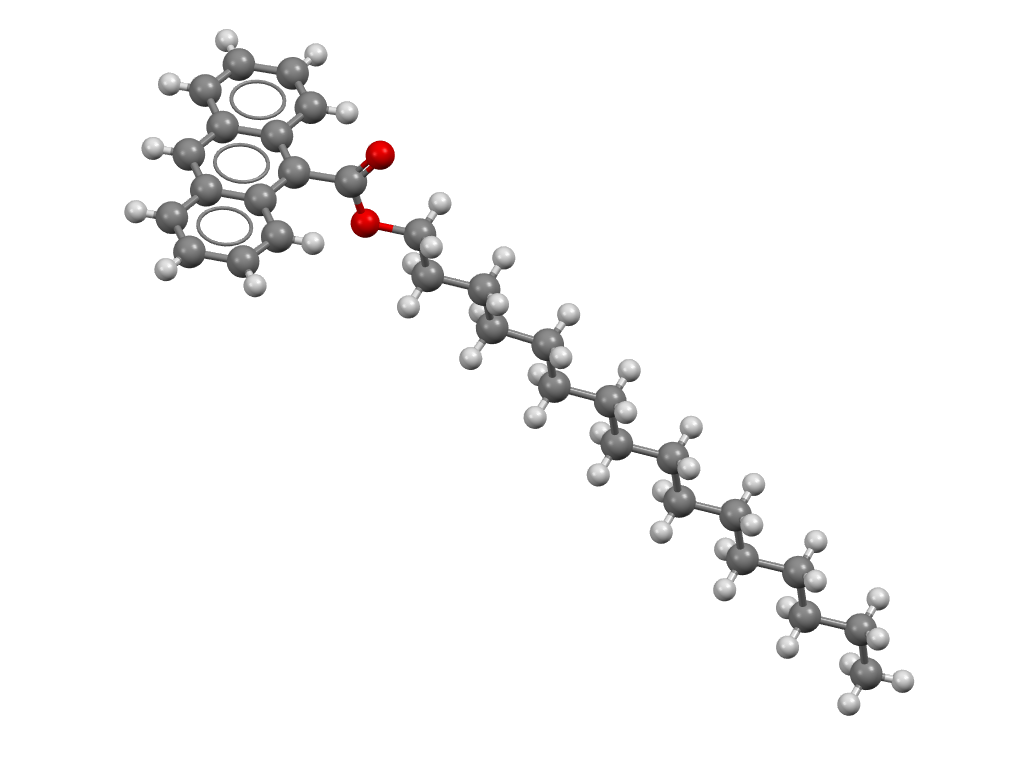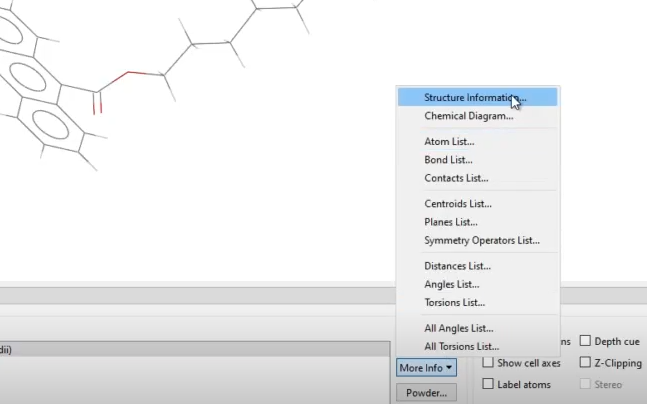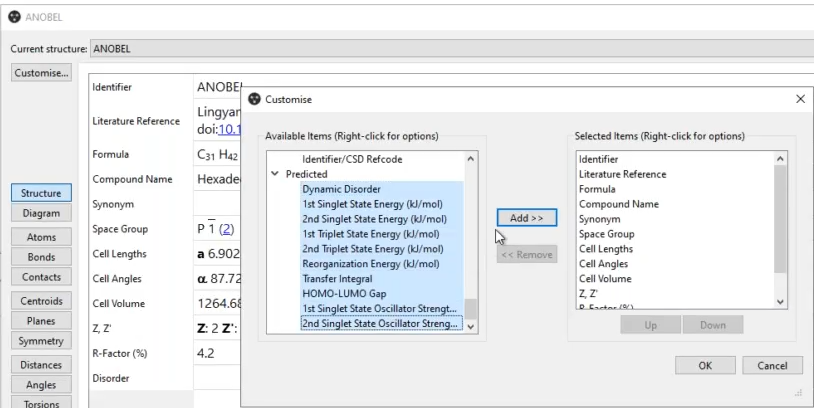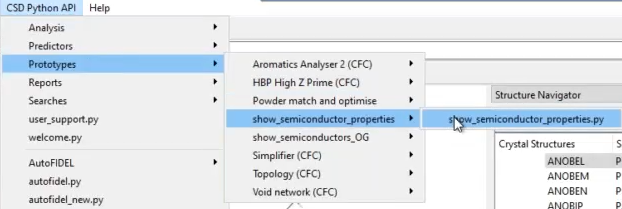Cambridge Structural Database Extended to Semiconductor Applications
A range of properties important to semiconductors have been added to thousands of structures in the Cambridge Structural Database (CSD). Here we outline what has changed, and how you can access this data.

CSD Refcode ANOBEL— one of the 35044 structures in the CSD that now have semiconductor properties associated.
Semiconductor Property Data
Properties important to semiconductors have been added to ca. 35,000 structures in the CSD.
Organic electronics are increasingly common, and the availability of FAIR (findable, accessible, interoperable, reusable) data on key properties should be of great use in research and model training in this field. Since the CSD contains only experimentally confirmed structures, scientists can be sure there is a viable synthetic pathway for any structures identified as of interest.
The specific properties now available are:
- Dynamic Disorder
- 1st Singlet State Energy
- 2nd Singlet State Energy
- 1st Triplet State Energy
- 2nd Triplet State Energy
- Reorganization Energy
- Transfer Integral
- HOMO/LUMO gap
- 1st Singlet State Oscillator Strength
- 2nd Singlet State Oscillator Strength.
Calculation of the Data
The 1.3 million structures in the Cambridge Structural Database were first screened to remove polymeric molecules, disordered solids, co-crystals, entries with more than 1 molecule type in a unit cell, and entries with uncommon elements. This left ~250,000 structures.
The HOMO/LUMO gap of the structures were calculated, and then those with a gap outside the “useful“ range (i.e. the energy of visible light) were excluded, reducing the pool to ~175,000 structures.
The HOMO/LUMO gap was then recalculated with a more expensive calculation for these remaining structures, further reducing the pool to ca. 35,000 semiconductor structures.
Excited State Properties
Singlet and triplet energies for all the semiconductor structures were calculated using a time-dependent density functional theory (DFT). These measures enable the identification of thermally activated delayed fluorescence molecules and singlet fission molecules.
Complex Electronic Properties
The charge transfer integral was calculated for the semiconductor structures. The molecules with a narrow electronic bandwidth were filtered out. The reorganization energy and dynamic disorder were then calculated using the four-point schemes method and the dot product of the gradient of the transfer integral and the normal phonon modes respectively. This data was then fed into transport theory to give the mobility (Nematiaram, T., Padula, D., Landi, A. and Troisi, A., 2020. On the largest possible mobility of molecular semiconductors and how to achieve it. Advanced Functional Materials, 30(30), p.2001906).
How to Access the Semiconductor Properties Data
These properties can be viewed in the Mercury desktop interface, or accessed via the CSD Python API.
For a structure in Mercury, the semiconductor properties can be viewed by clicking More Info in the bottom panel and selecting Structure Information.

This display can then be edited by selecting Customize, selecting the properties you wish to add under the dropdown Predicted then clicking Add followed by OK.

You can now view the values of these semiconductor properties alongside your structure.
The semiconductor properties data can also be accessed via the CSD Python API.
CSD Python API scripts that show this data in context can be found through the Mercury CSD Python API menu under Prototypes or through the CCDC open source repo.

Acknowledgement
Incorporating the data was part funded by the Henry Royce Institute for Advanced Materials Research and Innovation through the Industrial Collaboration Programme, funded from grant EP/X527257/1.
Next Steps
Update your CSD installation to the latest version to ensure you have access to this data.
Sign up to our newsletter here to make sure you get alerted of future updates.
Join our regular webinars and online workshops for tips, demos, and discussions with scientists from the CCDC and beyond.